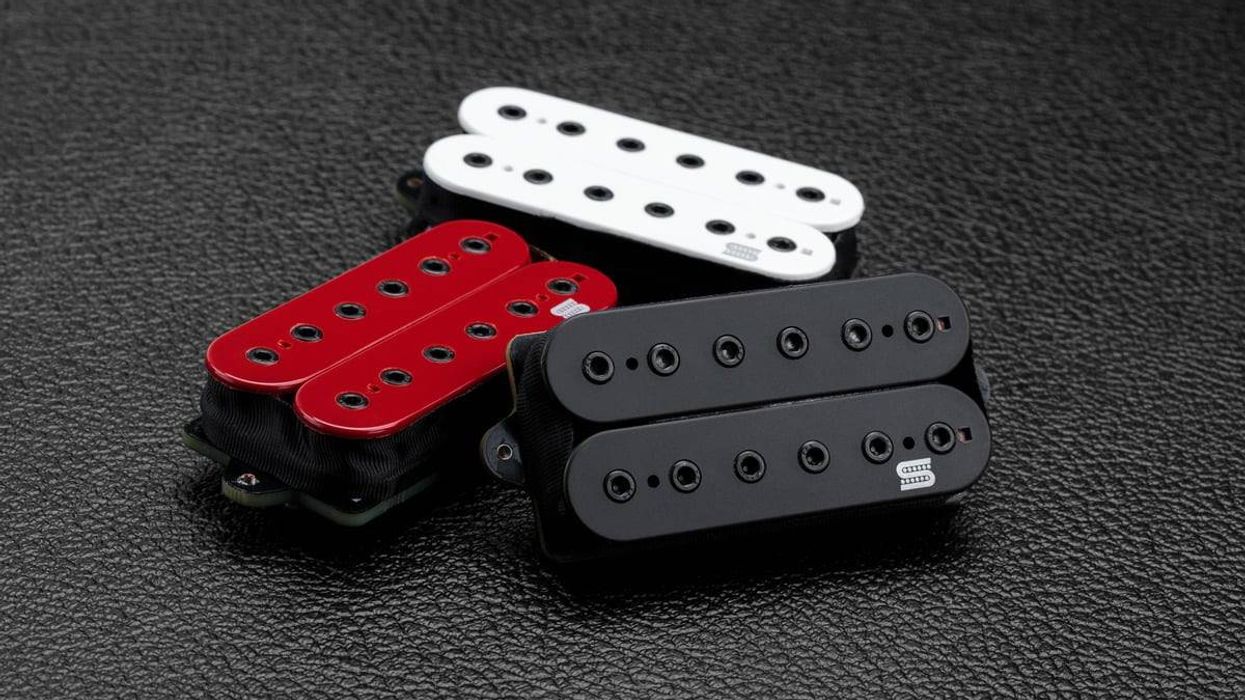Compressors can be a bassist's best friend, or in some cases, their worst enemy. They're infinitely useful for leveling signals and bringing out the best of what a rig can not only sound like, but feel like as well. They can work wonders when used properly, or completely strangle the life out of a great tone if misused. As an experienced bassist himself, 3Leaf Audio's Spencer Doren has tackled this particular flavor of effect with the PWNZOR optical compressor, which includes two modes for varying degrees of compression.
Hard-Pressed
The PWNZOR is a pretty intimidating-looking pedal. Housed in a Hammond Manufacturing 1590BB enclosure, the compressor exhibits a very industrial look and sports four control knobs to help shape, squeeze, and mold your tone in a variety of ways. The input control is the first step after engaging the pedal, which allows you to set how much signal is fed into the pedal's optical compression circuit. Higher settings will trigger the circuit easier, so it's a good idea to set this according to your pickup's output level. Attack sets the reaction time of the effect, and the ratio control determines the amount of gain reduction—which has a range of 1:1 through 10:1. Rounding out the set of control knobs, the gain control sets the output level.
Let’s move on to the really cool features of the PWNZOR. First off, the front panel’s toggle allows switching between vintage and modern compression modes. The vintage mode sends the output signal to the compression circuit, while the modern mode sends the signal from the input, which results in a much punchier and throatier tone. Inside the pedal are three additional controls: a bypass-mode switch for selecting true or buffered bypass, and two small pots for setting release time and input gain. The PWNZOR does not take batteries, so it requires a 9V wall wart to run. But interestingly, it has an internal voltage-doubler that ups the input power to 18V for expanded headroom, which is a pretty cool idea for those who don't have an 18V power supply lying around.
While the pedal feels solid, and the circuit board is assembled and soldered well, the input and output jacks are made from plastic. In my experience, plastic input jacks can be prone to accidentally breaking, but 3Leaf Audio states that they have used more than 4,000 Neutrik-manufactured jacks without a single failure to date. It should also be noted that there is a pair of gaps in the enclosure between the bottom edges of the jacks and the back plate. While this probably made it easier to drop in the assembled circuit, some care should be taken to avoid getting the circuit board dirty, since the pedal is going to spend most of its time on the floor.
Pwn The Tone
With a Verellen Meat Smoke amplifier and a USA Kramer Striker bass, I switched the PWNZOR into vintage mode with the attack, input, and ratio knobs set between 9 o’clock and 10 o’clock, and upped the gain to 11 o’clock. A very handy feature of the pedal is that the LED indicator will light up in red when striking a note, and then fade to green as the compressor’s trigger releases the signal. As I played more and cranked the input control higher, the longer the LED would remain red, showing that the compressor was having an easier time clamping down on the signal and not letting go. Setting an appropriate level with the input control was made that much easier with this visual cue, since it allowed me to determine exactly when the effect was coming in and out.
Ratings
Pros:
Great tone and many options for dialing in the right amount and type of compression.
Cons:
The gaps leading to an exposed circuit board are a minor cause for concern.
Tones:
User Friendliness:
Build:
Value:
Street:
$219
3Leaf Audio
3leafaudio.com
Tonally, the pedal is smooth as can be. Unless I had the gain and ratio controls set ridiculously high, it was difficult to get a bad sound from the effect—a testament to how expertly the pedal was voiced on the assembly table. The entire range of the attack control—essential to coaxing more detail out of the tone—allowed the effect to ride in ever so smoothly with each pluck of the strings. Higher settings were great for funkier slap playing, which brought in the pedal’s snappy compression with immediate authority. And the lower ranges were perfect for slower, more nuanced low-end work that needed to breathe in and out of the mix.
For tones that laid back in the mix in this manner, the vintage mode was the obvious choice since it allowed my attack to sit back slightly. Conversely, the modern mode made each note’s attack more noticeable and poignant. While there wasn’t a massive difference in the actual tone between modern and vintage, there was a highly noticeable difference in the way the bass felt while playing. Running through more rock-based lines went hand in hand with the modern mode’s immediate-sounding nature, while bluesy runs in the vintage setting allowed me to let up on striking the string exactly on the beat—as everything just felt looser and more comfortable.
The Verdict
3Leaf did an excellent job in designing the PWNZOR, making it a quality piece of equipment for the compression-conscious bassist. It’s ability to be tweaked and tailored over a large spectrum is one of its high points, as is its perfectly set voicing to minimize overly squished tone. While care should be taken with the enclosure gaps on the bottom of the pedal, the PWNZOR is a knockout choice in the world of compression pedals for bass, and is certainly worth a good look for those bassists looking to keep their peaks and valleys in check.

























